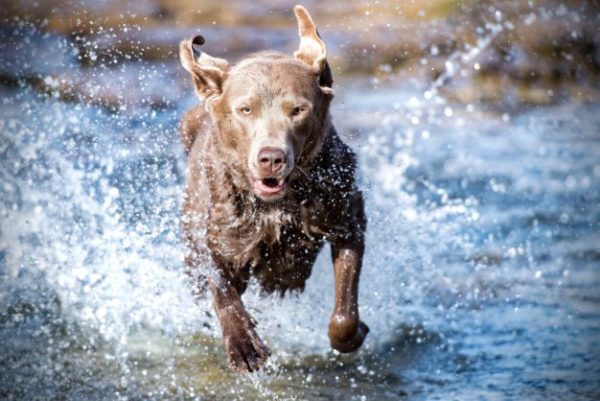Americans will be swarming to swimming pools and waterways to cool off this spring and summer, with above-normal temperatures predicted for most of the country. So don’t be surprised if you happen to find your pup in the pool as the warm weather encroaches. Taking your dog for a swim may seem like the natural thing to do. Understandably, you adore your pet and want it to be as comfortable as possible. But there are several considerations to be made before letting your dog dive into the deep end.
Not All Dogs Are Equal Swimmers
Given there are nearly 83 to 88 million dogs living in U.S. households today, it’s a fair assumption that families love their furry friends and often include them in their recreational activities. It’s important to keep your pet cool and hydrated over summer but bear in mind that not all dogs are instinctive swimmers. Don’t assume the breed of the dog will determine if it can swim or not. Your pet’s attitude to water and its swimming ability are learned behaviors that may be influenced by a number of factors, including their general level of anxiety and past experiences.
Introducing Your Dog to Water
Swimming lessons are a great idea for a canine companion. Also, consider investing in a personal floatation device for your animal and learn the appropriate cardiopulmonary resuscitation techniques. When introducing a dog to water, start with short periods of exposure. Try a partly filled container for shallow wading at first. Make sure the dog knows how to get out, and encourage it with toys if necessary. Support the dog in deeper water until it is safe on its own, and don’t let it drink the water, which may contain toxic amounts of bacteria, blue-green algae, parasites, chemicals, or salt. At all times, be present and vigilant when your dog is in a lake, the ocean or a backyard pool.
Health Risks for Humans
Dogs bring three times more dirt (think skin secretions, insects, and fecal matter) into pools than humans. They can also introduce microorganisms like E. coli, giardia, and cryptosporidium, all of which can be passed on to people. If you do permit pooches in your pool, regularly clean it and empty the filter box, but never allow a dog that’s sick or has diarrhea into a pool. When children are splashing around near dogs, make sure they know the safest way to interact with the animal. Also, keep your dog’s nails trimmed to reduce the chance of scratches and spreading germs.
Preparing your pup for a swim may feel like a huge undertaking. But once you’re aware of the potential perils and the preventative steps you can take to avoid them, spending time by the water with your dog can be a lot of fun. When it comes to safeguarding your loved ones this summer, a little forethought is definitely worth it.
Article by: Jane Anderson, a freelance writer, editor and dog owner
Photo by Marcus Benedix on Unsplash
